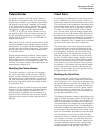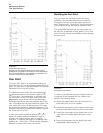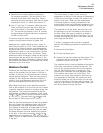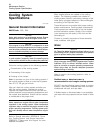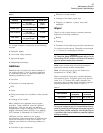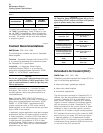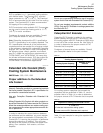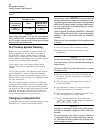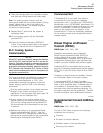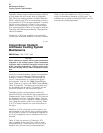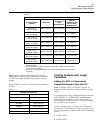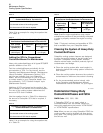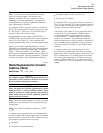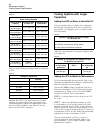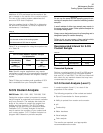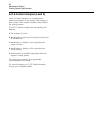Special offers from our partners!

Find Replacement BBQ Parts for 20,308 Models. Repair your BBQ today.

29
Maintenance Section
Cooling System Specifications
8. Drain the cooling system into a suitable container
and flush the cooling system with clean water.
Note: The cooling system cleaner must be
thoroughly flushed from the cooling system. Cooling
system cleaner that is left in the system will
contaminate the coolant. The cleaner may also
corrode the cooling system.
9. Repeat Steps 7 and 8 until the system is
completely clean.
10. Fill the cooling system with the Caterpillar
premixed ELC.
11. Attach the Special Publication, PEEP5027,
“Label” to the cooling system filler for the engine
in order to indicate the use of Caterpillar ELC.
ELC Cooling System
Contamination
NOTICE
Mixing ELC with other products reduces the effective-
ness of the ELC and shortens the ELC service life.
Use only Caterpillar products or commercial products
that have passed the Caterpillar EC-1 specification for
premixed or concentratecoolants. Use only Caterpillar
ELC Extender with Caterpillar ELC. Failure to follow
these recommendations can result in shortened cool-
ing system component life.
ELC cooling systems can withstand contamination
to a maximum of ten percent of conventional
heavy-duty coolant/antifreeze or SCA. If the
contamination exceeds ten percent of the total
system capacity, perform ONE of the following
procedures:
•
Drain the cooling system into a suitable container.
Dispose of the coolant according to local
regulations. Flush the system with clean water. Fill
the system with the Caterpillar ELC.
•
Drain a portion of the cooling system into a
suitable container according to local regulations.
Then, fill the cooling system with premixed ELC.
This should lower the contamination to less than
10 percent.
•
Maintain the system as a conventional Diesel
Engine Antifreeze/Coolant (DEAC). Treat the
system with an SCA. Change the coolant at the
interval that is recommended for the conventional
Diesel Engine Antifreeze/Coolant (DEAC).
Commercial ELC
If Caterpillar ELC is not used, then select a
commercial ELC that meets the Caterpillar
specification of EC-1 and either the “ASTM D5345”
specification or the “ASTM D4985” specification. Do
not use an extended life coolant that does not meet
the EC-1 specification. Follow the maintenance
guide for the coolant from the supplier of the
commercial ELC. Follow the Caterpillar guidelines
for the quality of water and the specified coolant
change interval.
i01111753
Diesel Engine Antifreeze/
Coolant (DEAC)
SMCS Code: 1350; 1352; 1395
Caterpillar recommends using Caterpillar
Diesel Engine Antifreeze/Coolant (DEAC) for
cooling systems that require a heavy-duty
coolant/antifreeze. Caterpillar DEAC is an alkaline
single-phase ethylene glycol type antifreeze that
contains corrosion inhibitors and antifoam agents.
Caterpillar DEAC is formulated with the correct
amount of Caterpillar Supplemental Coolant Additive
(SCA). Do no use SCA at the initial fill when DEAC
is used.
Containers of several sizes are available. Consult
your Caterpillar dealer for the part numbers.
If concentrated DEAC is used, Caterpillar
recommends mixing the concentrate with distilled
water or with deionized water. If distilled water is
not available or deionized water is not available,
use water which has the required properties. For
the water properties, see this publication, “General
Coolant Information” topic (Maintenance Section).
i01069295
Supplemental Coolant Additive
(SCA)
SMCS Code: 1350; 1352; 1395
The use of SCA helps to prevent the following
conditions from occurring:
•
Corrosion
•
Formation of mineral deposits
•
Cavitation erosion of the cylinder liners
•
Foaming of the coolant



